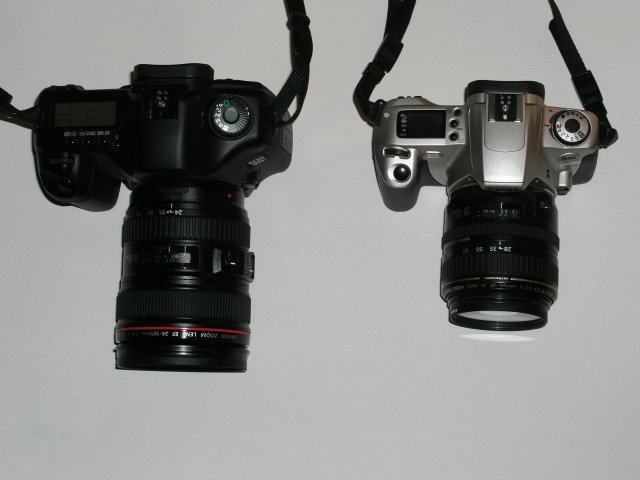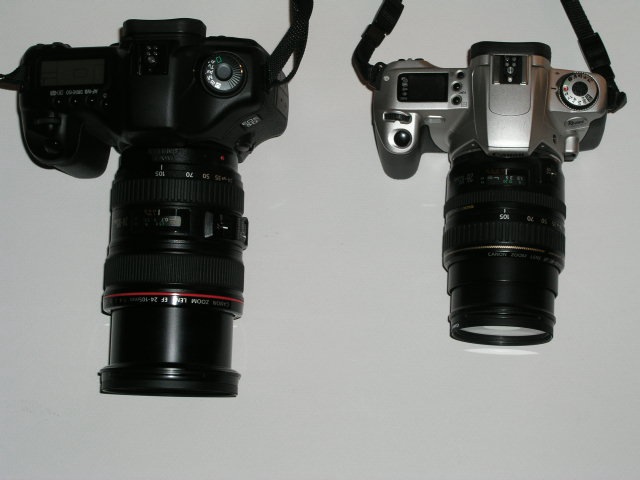Some empirical tests deliver surprising results.
Being the ‘serious’ photographer in the family, the sad responsibility of selling off everyone’s film cameras naturally falls on my shoulders as we all move on to the world of digital picture taking.
I made mention of my mother-in-law’s magnificent Kodak Medalist II earlier, at which time I also sold her film Canon Rebel, together with its cheesy 28-80mm ‘kit’ lens.
Years earlier I had bought the same Rebel but got so tired of the execrable quality of the kit lens that we sold it and replaced it with a better 28-105mm f/3.5-4.5 Canon with improved optical and mechanical quality. When she decided to upgrade to the digital Rebel, we did the same, buying the pricey EF-S 17-85mm f/4-5.6 IS in lieu of the 18-55mm f/3.5-5.6 non-IS kit lens. A wise decision once you have handled the latter.
Anyway, I finally decided to sell the film Rebel and I dutifully listed it for sale. However, as the lens will cover a full 35mm frame I spent a few moments taking some pictures with it side by side with the costly 24-105mm f/4 L lens, both on my Canon 5D. You can get some sense of the relative sizes of the lenses here:

Both lenses at their shortest focal lengths

Both lenses fully extended
I took pictures at full aperture and f/8 with both, at 28mm, 50mm and the 105mm maximum.
Looking at the results, I must confess any differences are more imagined than real, and I know my 24-105mm L is good for enlargements to any size any rational user would want.
The L lens adds an Image Stabilizer, goes wider at a very handy 24mm, has lots of metal, very smooth controls no wobble anywhere plus …. lots of weight and bulk. By contrast, the 28-105mm lens is very light, although the mount is metal, has a horribly raspy, grabby zoom ring and the lens barrel wobbles about merrily when fully extended. Both have autofocus with the L marginally faster, but not enough to make any practical difference. Oh! and yes, before I forget, the L is $1,300 and the other is $230.
Now we may have been lucky and got a really good example of the cheaper lens, but based on this little exercise, I would recommend it without hesitation for anyone looking for light weight, fine resolution and a nice broad zoom range good for 95% of anything a regular photographer might need. You might not want to bash it about too much or expect it to last to the next millenium but, then again, you would also save a lot on chiropractor bills, not to mention over $1,000 on the lens.